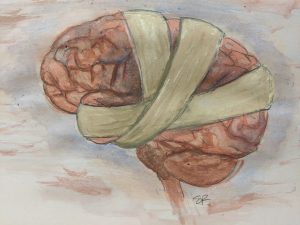
As a child growing up with a neurologist for a dad, I always heard the phrase “don’t forget to wear your helmet!” whenever I wanted to ride my bike or rollerblade or whenever I took horseback riding lessons. I always thought that it was lame. None of my friends wore helmets so why should I? I always thought they would pick on me or say I wasn’t cool because I had a helmet on. I was embarrassed by it.
Fast forward to now. As a soon to be graduate with a degree in neuroscience, I now completely understand the importance of wearing a helmet whether its simply riding a bike or flying down the slopes on my snowboard.
What happens when you don’t wear a helmet?
Not wearing a helmet increases your risk of brain injury. The most common type of traumatic injuries are concussions. Concussions can occur even with wearing a helmet if the impact is hard enough. Concussions most commonly result from falls, motor vehicle accidents, and sporting accidents.
What happens during a concussion?
Concussions occur when the brain moves inside the skull. After the skull hits a stationary object, that force causes the brain to swirl around inside the skull. The brain bumps into the sides of the skull and damages tissue.

Concussions are not fun. They can cause both temporary and long-lasting problems in cognitive abilities and proper brain function.
Some short-term effects of a concussion include:
- Temporary loss of consciousness
- Headache
- Dizziness
- Feeling foggy
- Ringing in ears
- Nausea or vomiting
- Blurred vision
- Sensitivity to light and sound
- Fatigue
Some long-term effects of a concussion include:
- Difficulties concentrating
- Memory issues
- Irritability or other changes in personality
- Sleep issues
- Depression or other psychological problems
Though there is no concussion proof helmet, it is still an important thing to wear. Yes, you can still get a concussion even by wearing a helmet. This happened to me while snowboarding. But wearing a helmet can help minimize the effects. If the helmet can take most of the force, the brain won’t move around as much and not bump into the sides of the skull as hard.
References:
https://healthcare.utah.edu/healthfeed/postings/2016/11/concussion.php
https://www.scientificamerican.com/article/what-happens-to-the-brain/
Image:
https://kidshealth.org/HCA/en/parents/az-concussion.html